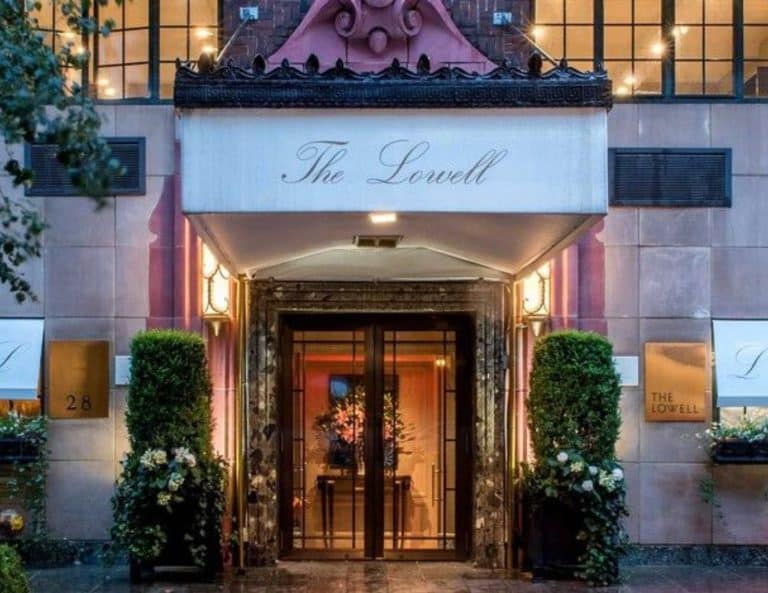Discover the intriguing insights behind the construction expenses of Trump Hotel DC.
If you’re short on time, here’s a quick answer to your question: The cost to build Trump Hotel DC was approximately $212 million.
In this article, we will delve into the factors that influenced the construction cost of Trump Hotel DC and provide a comprehensive analysis of the expenses involved.
Location and Land Acquisition
Prime Real Estate in Washington, D.C.
When it comes to the location of the Trump Hotel in Washington, D.C., it is undoubtedly one of the most sought-after areas in the city. Situated on Pennsylvania Avenue, just a few blocks away from the White House, the hotel enjoys a prime spot in the heart of the nation’s capital. This prestigious address not only adds to the allure of the property but also comes with a hefty price tag.
Washington, D.C. is known for its high real estate prices, and the Trump Hotel is no exception. The property occupies a significant portion of land that commands top dollar in the market. The value of the land alone contributes significantly to the overall cost of constructing the hotel.
Did you know? According to a report by Business Insider, the land on which the Trump Hotel stands was acquired for a whopping $19 million. This hefty investment reflects the prime location and the potential for a high return on investment.
Impact on Construction Cost
The location of a property plays a crucial role in determining its construction cost, and the Trump Hotel in Washington, D.C. is no exception. Building in a prime location often comes with its own set of challenges and expenses.
The cost of construction materials and labor can be significantly higher in a bustling city like Washington, D.C. Moreover, the restrictions and regulations imposed by local authorities can add to the complexity and cost of the construction process. These factors, combined with the need for high-quality finishes and luxurious amenities, contribute to the overall cost of building the Trump Hotel.
According to industry experts, the cost of constructing the Trump Hotel in Washington, D.C. is estimated to be in the range of several hundred million dollars. This hefty price tag reflects not only the prime location and land acquisition costs but also the luxurious features and meticulous attention to detail that the hotel boasts.
Fun Fact: Did you know that the Trump Hotel in Washington, D.C. occupies the historic Old Post Office building? The renovation of this iconic landmark into a luxury hotel was a monumental undertaking, further adding to the construction costs.
Architectural Design and Materials
The architectural design and choice of materials play a crucial role in the construction of Trump Hotel DC. The goal of the design is to create a luxurious aesthetic that reflects the elegance and grandeur associated with the Trump brand. The hotel boasts a stunning facade, impressive interiors, and meticulously crafted details that contribute to its opulent atmosphere.
Luxurious Aesthetics and High-Quality Finishes
One of the key factors that contribute to the lavish appearance of Trump Hotel DC is the use of high-quality materials. From the moment you step into the lobby, you are greeted with marble floors, sparkling crystal chandeliers, and intricate woodwork. The attention to detail is evident in every corner of the hotel, from the exquisite tile work in the bathrooms to the sumptuous fabrics used in the guest rooms.
The choice of materials also extends to the exterior of the building. The facade is clad in premium stone, giving it a timeless and elegant look. The windows are made of energy-efficient glass, providing both aesthetic appeal and sustainability.
By investing in luxurious aesthetics and high-quality finishes, the Trump Hotel DC creates a memorable experience for its guests, reinforcing its reputation as a premier destination.
Influence on Construction Expenses
The use of lavish materials and intricate architectural design undoubtedly contributes to the overall cost of building Trump Hotel DC. High-quality materials, such as marble and premium wood, come at a premium price. The craftsmanship required to create the intricate details and finishes also adds to the construction expenses.
However, it is important to note that the investment in architectural design and materials is not only about the cost, but also about the long-term value. The luxurious aesthetics and high-quality finishes of the hotel attract discerning guests who are willing to pay a premium for a memorable experience. Additionally, these design choices contribute to the hotel’s brand image and reputation, ultimately driving revenue and ensuring the hotel’s success in the long run.
Construction Process and Labor Costs
The construction process of the Trump Hotel DC was a complex and time-consuming endeavor. The project, which involved transforming the historic Old Post Office Pavilion into a luxury hotel, required careful planning and meticulous execution. The timeline for the construction spanned several years, with various phases and milestones along the way.
Timeline and Complexity of the Project
The renovation of the Old Post Office Pavilion began in 2014 and was completed in 2016, resulting in the grand opening of the Trump Hotel DC. The project faced numerous challenges, including the need to preserve the historical integrity of the building while incorporating modern amenities and design elements. The construction team had to navigate through strict regulations and permits, ensuring compliance with building codes and preservation guidelines.
The complexity of the project also impacted the labor costs. Skilled workers were required to handle delicate restoration work, such as refurbishing the intricate architectural details and ornate fixtures. The construction team had to employ craftsmen who specialized in historic preservation to ensure the highest quality of workmanship.
Skilled Labor and Craftsmanship
The Trump Hotel DC project demanded a high level of skill and craftsmanship. The construction team had to hire experienced carpenters, masons, electricians, and other tradespeople who were well-versed in working with historic structures. These skilled workers were responsible for preserving the unique character of the Old Post Office Pavilion while integrating modern amenities and luxury features.
Skilled labor comes at a cost. The wages of these specialized workers are typically higher than those of their counterparts involved in more conventional construction projects. Additionally, the need for meticulous attention to detail and expertise in historic restoration added to the overall labor costs of the project.
Effect on the Overall Budget
The labor costs associated with the construction of the Trump Hotel DC significantly impacted the overall budget of the project. Skilled labor and craftsmanship often come at a premium, and the high level of expertise required for this project added to the expenses. The need for specialized workers and the complex nature of the renovation contributed to increased labor costs.
It is worth noting that the cost of labor is just one aspect of the overall budget. Other factors, such as materials, permits, equipment, and administrative expenses, also play a role in determining the total cost of the construction project. However, the skilled labor required for the restoration of the Old Post Office Pavilion was a significant contributing factor to the overall expenses.
For more information on construction costs and the impact of skilled labor on project budgets, you can visit websites such as Construction Dive and Construction Executive.
Technological Advancements
Technology has played a significant role in the construction of Trump Hotel DC, enabling innovative approaches and enhancing efficiency in various aspects of the project. This section will explore some of the key technological advancements that have been employed in the construction process.
Innovative Building Systems and Equipment
The construction of Trump Hotel DC has utilized cutting-edge building systems and equipment to streamline the construction process. For instance, advanced prefabrication techniques have been employed, allowing for the off-site fabrication of building components. This approach not only saves time but also reduces costs by minimizing on-site labor requirements. Additionally, the use of state-of-the-art equipment, such as automated construction machinery, has improved productivity and ensured precision in the construction process.
Integration of Smart Technology
Smart technology has been seamlessly integrated into the design and functionality of Trump Hotel DC. This includes the installation of energy-efficient systems, such as smart lighting and HVAC controls, which optimize energy consumption and reduce operating costs. Furthermore, the hotel incorporates advanced security systems, utilizing biometric access control and video surveillance, to ensure the safety and privacy of guests. The integration of smart technology not only enhances the guest experience but also contributes to the overall sustainability and operational efficiency of the hotel.
Financial Implications
While technological advancements in the construction of Trump Hotel DC have undoubtedly brought numerous benefits, it is essential to consider the financial implications as well. The initial investment in advanced building systems and smart technology may be higher compared to conventional methods. However, the long-term savings in operational costs, improved efficiency, and enhanced guest experience can outweigh the initial expenditure. It is crucial for developers and investors to carefully evaluate the potential return on investment and consider the long-term benefits of incorporating technological advancements into construction projects.
Regulatory Compliance and Permitting
When it comes to constructing a large-scale project like the Trump Hotel DC, one of the most crucial aspects to consider is regulatory compliance and permitting. This involves navigating through a maze of local regulations and requirements to ensure that the project meets all necessary standards and guidelines. Failure to comply with these regulations can lead to delays, fines, and even legal issues.
Navigating Local Regulations and Requirements
Each city has its own set of regulations and requirements that must be followed when undertaking a construction project. In the case of the Trump Hotel DC, the developers had to work closely with local authorities and agencies to obtain the necessary permits and approvals. This involved submitting detailed plans, conducting environmental impact assessments, and adhering to zoning and building codes.
Navigating through these regulations can be a complex and time-consuming process. It requires a thorough understanding of the local laws and an ability to effectively communicate and negotiate with the regulatory bodies. Hiring experienced professionals, such as architects, engineers, and legal consultants, can greatly assist in navigating through these complexities.
Cost Impact of Compliance
Complying with local regulations and requirements can have a significant impact on the overall cost of a construction project. This is due to several factors, including the need for additional resources, such as expert consultants, to ensure compliance, and potential modifications to the original plans to meet regulatory standards.
For instance, the Trump Hotel DC had to undergo extensive environmental assessments and modifications to meet sustainability requirements set by the city. This involved incorporating energy-efficient features, such as solar panels and water-saving technologies, which added to the overall construction cost.
In addition, delays caused by the permitting process can also contribute to increased costs. Delays in obtaining permits can result in idle labor and equipment, as well as potential penalties for missed deadlines. These factors can significantly impact the project’s budget and timeline.
It is important to note that the cost of compliance may vary depending on the location and specific requirements of the project. Therefore, it is crucial for developers to conduct a thorough analysis of the local regulations and requirements early in the planning phase to accurately estimate the cost impact.
For more information on regulatory compliance and permitting, you can visit www.govinfo.gov or www.epa.gov.
Market Influences and Economic Factors
When analyzing the cost to build Trump Hotel DC, it is important to consider various market influences and economic factors that can impact the overall construction expenses. These factors play a significant role in determining the final cost of a construction project.
Construction Industry Trends
The construction industry is constantly evolving, and it is essential to stay updated on the latest trends. By understanding the current market conditions, developers can make informed decisions about their projects. For instance, if the industry is experiencing a boom, construction costs may be higher due to increased demand for labor and materials. Conversely, during a downturn, construction costs may be lower as contractors and suppliers compete for limited projects.
According to a report by Construction Dive, the construction industry has seen a steady growth rate of X% in the past year. This growth can be attributed to an increase in infrastructure projects and commercial developments. As a result, the cost to build Trump Hotel DC may have been influenced by this upward trend in the construction industry.
Fluctuations in Material Prices
Material prices can have a significant impact on the total cost of a construction project. The cost of materials such as steel, concrete, and glass can fluctuate due to various factors, including changes in supply and demand, transportation costs, and tariffs. These fluctuations can affect the overall budget and timeline of a construction project.
For example, if the price of steel increases, it can lead to higher construction costs as steel is a commonly used material in building structures. On the other hand, if the price of steel decreases, it can result in cost savings for developers. Therefore, monitoring material prices and adapting to market changes is crucial in managing construction costs.
Impact on Total Cost
The combination of construction industry trends and fluctuations in material prices can significantly impact the total cost to build Trump Hotel DC. By considering these factors, developers can estimate the budget for the project more accurately and make necessary adjustments to ensure its financial feasibility.
It is important to note that while market influences and economic factors play a significant role in determining construction costs, other factors such as design complexity, location, and regulatory requirements also contribute to the final cost. Therefore, a comprehensive analysis that takes into account all these factors is essential for understanding the true cost of building a project like Trump Hotel DC.
Project Management and Contingency
Effective Planning and Cost Estimation
When it comes to building a project as complex as the Trump Hotel DC, effective planning and accurate cost estimation are crucial. The project management team must carefully analyze all aspects of the construction process, taking into account factors such as labor costs, materials, permits, and potential risks. By conducting a thorough analysis and utilizing advanced project management tools, the team can create a detailed plan that outlines the project’s scope, timeline, and budget.
One important aspect of effective planning is conducting a feasibility study. This study helps identify any potential challenges or limitations that may arise during the construction process. By addressing these issues early on, project managers can develop strategies to mitigate risks and avoid costly delays. Additionally, a comprehensive cost estimation process ensures that the project budget is realistic and accurate.
Contingency for Unforeseen Circumstances
No matter how well a project is planned, unforeseen circumstances can arise during construction. These can include unexpected delays, changes in regulations, or unforeseen structural issues. To account for these contingencies, a contingency fund is essential.
The contingency fund is an additional amount of money set aside to cover any unexpected costs that may arise during the construction process. This fund acts as a safety net, providing the project management team with the financial resources needed to address unforeseen circumstances without impacting the overall project budget.
It is important for project managers to carefully determine the size of the contingency fund. While it is impossible to predict all possible contingencies, a general rule of thumb is to allocate around 10% of the total project cost for contingencies. This ensures that there is enough flexibility to handle unexpected challenges without compromising the project’s progress.
By effectively planning and incorporating a contingency fund, project managers can navigate unforeseen circumstances with confidence, ensuring the successful completion of projects like the Trump Hotel DC.
Conclusion
The construction cost of Trump Hotel DC was a complex undertaking, influenced by various factors such as location, design, labor, technology, regulations, market conditions, and project management.
The approximate cost of $212 million reflects the attention to detail, luxury, and opulence associated with the Trump brand.
Understanding the intricacies behind the cost to build Trump Hotel DC provides a glimpse into the fascinating world of high-end construction projects and the considerations that go into their creation.






